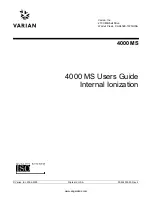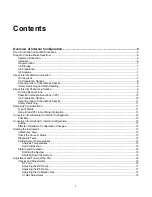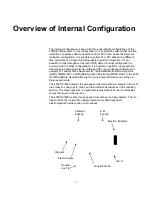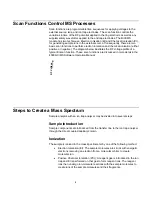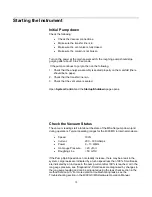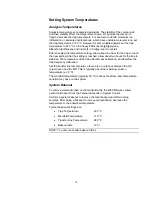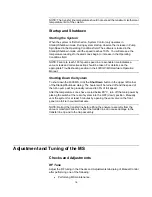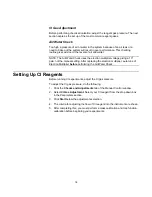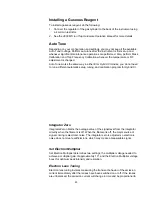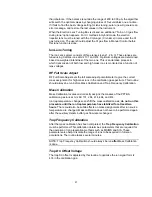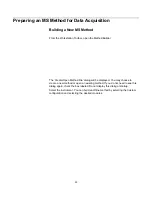
8
helium but others undergo unimolecular decomposition to create various
fragment ions, f
+
i
.
This set of fragment ions, characteristic of the sample
molecule, makes up the mass spectrum.
−
∗
+
−
+
→
+
e
A
e
A
2
Ionization
∗
+
A
(
is excited)
He
+
∗
+
→
A
A
De-excitation
A
→
∗
+
1
1
n
f
+
+
Equilibration
→
2
2
n
f
+
+
→
3
3
n
f
+
+
Fragmentation
The ion trap has a maximum storage capacity beyond which mass resolution and
spectral quality deteriorate. The number of ions created depends on the
ionization time. As the ionization time increases, more ions are created.
Automatic Gain Control (AGC) controls the ionization time to always create an
optimum number of ions in the trap.
The AGC scan-function consists of a prescan and up to six analytical scan
segments. The number of ions detected in the prescan is used to calculate the
ionization time for the analytical scan.
Ion Preparation Options
The 4000 MS can use a combination of waveforms applied to ion trap electrodes
to isolate or remove specific ions once they have been formed and are stored in
the trap.
Options like Selected Ion Storage (SIS) and Tandem Mass Spectrometry
(MS/MS) can be performed on the ions stored in the ion trap before mass
analysis takes place. In SIS, resonant waveforms are applied to eject unwanted
ions within the stored mass range and fill the trap only with ions in the mass
range(s) of interest. In MS/MS, a parent ion is isolated and then dissociated by
energetic collisions with helium buffer gas to form product ions.
The Internal configuration can have SIS, MS/MS, MS
n
, and Multiple Reaction
Monitoring (MRM) as ion preparation options. SIS is included with all
instruments, while MS/MS, MS
n
, and MRM are available with the MS/MS option
installed.
Scanning Ions to Collect Mass Spectra
After ionization, trapping, and ion preparation steps, ions are scanned out of the
trap to the conversion dynode and electron multiplier. The ions are analyzed by
applying a radio frequency (RF) voltage to the ring electrode encircling the trap
cavity. As the voltage increases on the ring electrode, ions are sequentially
ejected from the trap according to their mass-to-charge ratio. Supplemental
waveform voltages are applied to the endcap electrodes during the analysis to
improve mass resolution and mass axis stability. Ions strike the conversion
dynode and then electrons are ejected from the conversion dynode, held at
-10 kV, and are repelled to the electron multiplier. The signal is amplified by ~10
5
by the electron multiplier and sent through an integrator to collect an intensity for
each m/z. MS data are stored as sets of ion-intensity pairs for each m/z over the
acquired mass range. A complete mass spectrum is stored for each analytical
Summary of Contents for 4000 MS
Page 2: ......

